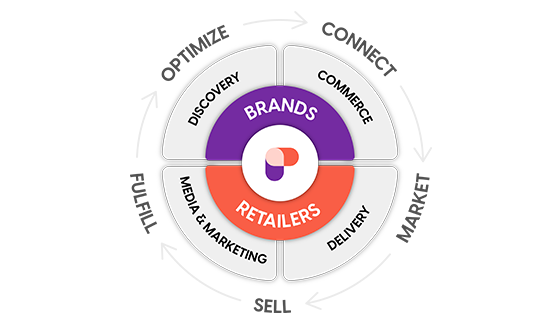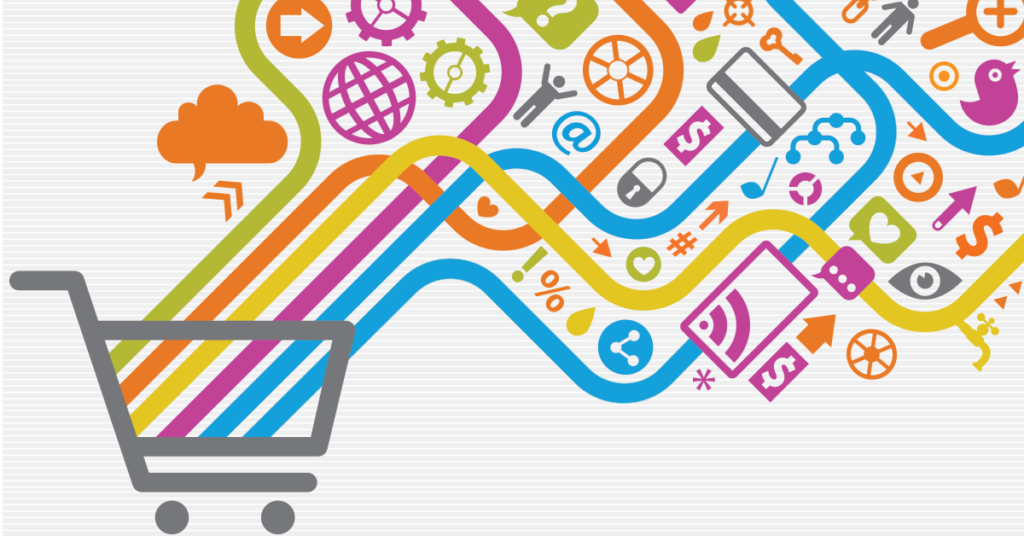The why, when and what you should consider in an e-commerce software
Maybe you’re tired of technical glitches and a lack of reliable support. Or it could be that your listings are underperforming and your revenue goals are slipping further from reach. Some sellers get frustrated when they can’t easily keep inventory updated and shipments tracked; others are ready to supercharge growth but don’t have a system capable of scaling with the business.
There are a lot of reasons to consider moving to a new e-commerce software platform. No matter where you stand, the implications are the same: If your current e-commerce software is failing to follow through with the tools and support you need to dominate the competition, it may be time to make a move. Thankfully, the process of switching to new software is much easier than you might think.
Prefer the PDF version of this eBook? Download the eBook here.
Why switch software?
When you’re competing in one of the fastest-paced industries, it’s imperative that your e-commerce software keeps up with the changes. And not in just two or three areas but across ALL marketing, selling and fulfilling activities. Across 100+ channels.
A comprehensive software platform powered by leading e-commerce experts will empower you to reach bigger goals, faster.
Your customers are everywhere. They can browse and buy — anywhere, at any time — and they expect deliveries on doorsteps within days, if not hours. The only way to keep pace is with a centralized software solution built to streamline mission-critical marketing, selling and fulfilling activities. Unfortunately, not all e-commerce software is equally effective at simplifying these processes. So, how can you know if it’s time to move to a new solution? And what can you do to make the transition as seamless as possible? In this guide, you’ll find the resources you need to help answer these questions.


Is it time to switch software?
At its core, your e-commerce software solution has one overarching job to do: Help you meet the expectations of today’s empowered consumer.
The right solution will enable you to create intentional moments of inspiration for consumers across the entire buyer’s journey — from first touch to brand advocacy.
The “Essentials Checklist”
If you want to maximize your full potential across e-commerce channels, you should be able to check off most — if not all — of the following features:
Reliable support and dependable integrations for… | ||
Marketing:
| Selling:
| Fulfilling:
|
Advanced tools including… | ||
Marketing:
| Selling:
| Fulfilling:
|
Access to… | ||
| ||
3-Minute self-assessment
Determine where things really stand with your current software solution:
On a scale of 1 to 10, how reliable is your current e-commerce software from a technical perspective?


How easy and intuitive is it to navigate?

How reliable are integrations and APIs?


How often are enhancements and updates released?


Quick questionnaire
Is the company behind the software growing?
An expanding company is a sure sign that your software is evolving to support increasing e-commerce demands across marketing, selling and fulfilling. Ask your account representative about growth over the last year: If the company been steadily expanding departments or partnerships, that’s a good indicator the software will continue to stay ahead of industry changes.
When you need technical support, is it easy to get a question answered?
In e-commerce, timing is everything. Every extra hour you have to wait to get an issue resolved or question answered is another hour you’re missing out on opportunities for sales.
What happens during peak and seasonal sales periods?
You should be receiving the same high level of support throughout the year, with an extra dose of “emergency” availability to help guide you through busy seasons successfully.
Have you ever been promised a feature that doesn’t actually exist?
This should never, ever happen.
Are you confident that your current software solution will still be available in 5, 10 or 20 years?
You should have enough confidence in the strength of your software to rest assured it will continue to scale with your business for years to come.
How quickly are you able to test a new advertising platform, launch products on a new marketplace or onnect to a new fulfillment partner?
Whether it’s testing campaigns through Google Shopping Actions or listing products globally, most channel expansions shouldn’t take months to complete. Likewise, you should be equipped to manage multiple carriers and fulfillment partnerships within the same interface so you can easily shop around for the best rates and fastest options.
Are you able to accomplish most of your marketing, selling and fulfillment activities within one software solution?
If you’re still logging into a dozen or more different dashboards to accomplish everyday tasks, that’s a sure sign you’ve outgrown your current e-commerce software.
What does it take to switch e-commerce software successfully?
Once you’ve decided it’s time to move to a new e-commerce software, you’re likely wondering: What’s next? The following steps are critical to success; keep them in mind as you begin the process of moving to a new solution.
1. Secure buy-in from your team
When moving to a new e-commerce software, the first step is to get input from key players throughout your company to ensure a smooth transition across operations and departments. This includes anyone who will use or be impacted by the new software.
GET INPUT FROM:
- Channel Managers
- Warehouse Managers
- E-commerce Directors
- IT Directors
TO:
- Ask what they feel is lacking in your current software
- Find out what they need from a new solution
- Prepare a list of key questions to ask before you make the switch
2. Get your data in order
Do you own your content? If not, how will you acquire it? What assistance will you receive in obtaining it? This is critical: To be successful on new e-commerce software, you’ll need valid product data. If you’re having difficulty in this area, ask your new provider to recommend vendors who can help you obtain accurate product content.
3. Ask about technical support
Your time is more valuable than ever. The technical support team should be available to help you through integrations, launch and day-to-day management. Find out ahead of time what your options will be when questions arise.
Did you know? The people behind Rithum™’s platform are always up-to-date on the latest marketplace trends and changes, and offer multiple support options, including launch managers to guide you through the process, forums, FAQs and tech support across three continents with emergency coverage during holidays, nights and weekends.
4. Leverage partnerships
As you move to new software, take advantage of relationships your provider has developed with other industry partners to get the full scoop on new opportunities as they arise. Ask to take part in beta programs when possible, and keep an eye out for invitations to try new marketing, selling or fulfilling initiatives.
Did you know? Rithum has longstanding partnerships with major industry leaders including Google, Amazon, eBay, Walmart and Facebook, as well as fulfillment providers including FedEx, UPS and USPS.
If your e-commerce software is doing its job, you’ll continually be in need of more: Support for more expansions, more campaigns, more channels, more partnerships, more orders, more deliveries and more customer interactions. Because when you use a solution designed to support massive growth, exciting things will happen. With the right mix of features and functions, you’ll not only meet all of your current needs but open the floodgates to new possibilities, too.
The largest global network of buyers and sellers


200M+
10
420+
$50B+
Ready to switch software?
Rithum has everything you need. All in one platform. Rithum has been on the frontlines of e-commerce since 2001, empowering retailers and brand manufacturers to scale and grow with ease.
Request a demo